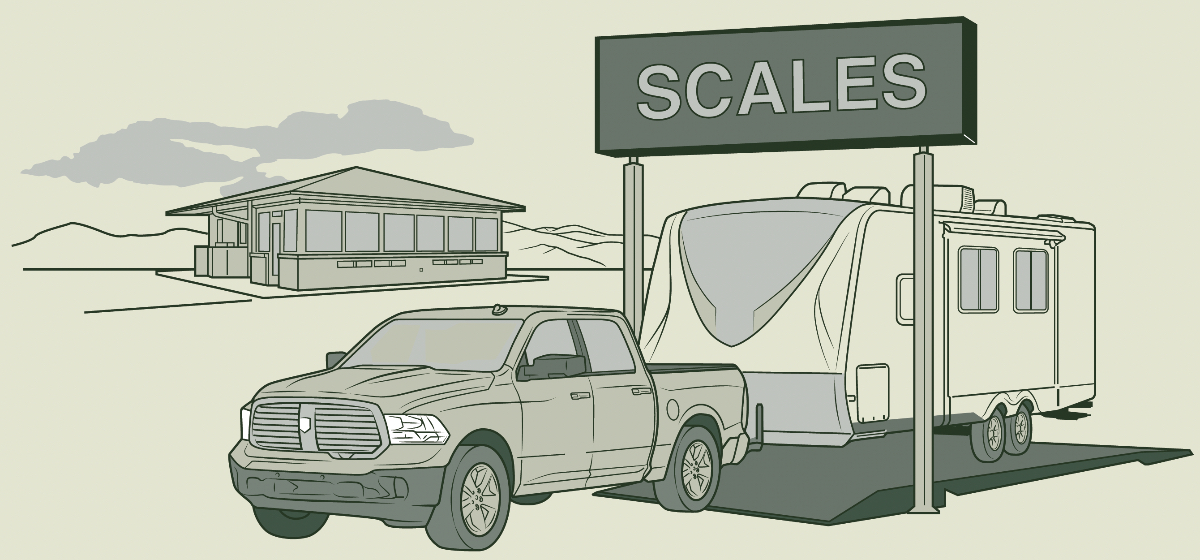Tech Q&A – December 2022
Service Intervals, a Lithium Battery Swap, and Using the RV's Ceiling Speakers
Image Caption:
Ford E-450 Rear Axle Service
Q: We have a 2019 Forest River 24-foot Class C Forester on an E-450 Ford chassis. I flat tow a 2019 Ford Fiesta. The Ford dealer told me that I should change the rear-end grease each time that I have the oil changed due to the increased load of pulling the towed vehicle. I realize that towing increases demand on the rear end, but this increases servicing cost substantially. Could you recommend a realistic servicing schedule in this case?
—Richard Chaffee, via email
A: I suspect the person you spoke with at the dealership was a service advisor. Typically, they make a substantial part of their pay from commissions based on a percentage of the service work they sell. This interval is crazy, and you should challenge the advisor to show you documentation of where this recommendation comes from. According to the official Ford 2019 Owner’s Manual on page 588, rear axle lubricant changes are recommended every 150,000 miles. Typically, constant towing is considered severe duty, and service intervals are doubled in frequency. So, you should be fine with changing the axle lube every 75,000 miles, not every 7,500 miles or more.
Lithium Batteries
Q: I’m contemplating changing out my RV’s lead batteries for lithium in my 2021 Winnebago View motorhome (the batteries have failed). Besides the batteries, what else do I need (or should I replace)? Also, how should I select the brand?
—Howard Blatt, via email
A: Regarding the failure of the batteries, two years is too quick. With proper care, they should last about 5 years. Were they left in a discharged state or left in storage for long periods without a maintenance charger being connected to them? Before changing over, you should be clear on battery care and charging. There are many online sources detailing the proper care and feeding of batteries, both conventional and lithium. Those sources produced by the battery manufacturers are generally more reliable than those from average Joe users.
The voltage regulator on the engine alternator is set too low for lithium batteries, so it will not fully charge them, but there are converters available to provide that full charge. A full charge can also come from a solar charge controller or the power converter from shorepower, or a generator powering the power converter. Before changing over, owners should check the power converter (inverter) to make sure it has a lithium battery charging setting. A lithium conversion can be very expensive, but the hardware is coming down in price as lithium technology develops and its use is more widespread in the RV world.
The lithium battery type you should use in an RV is lithium iron phosphate, which is written as LiFePO4. Most owners opt for 100Ah-rated batteries. Here is a short list of popular 12-volt lithium batteries for RVs: Battle Born, Kunmo, Moseworth, RELiON, Renogy, TalentCell, and Xantrex. There are many others, of course.
TV Speakers
Q: We have a 2018.5 Freightliner Jayco Super C 37TS S2 RV. Is there a way that I can use the ceiling speakers for the TV? We don’t listen to the radio in the RV.
—Art Horn, North Street, Michigan
A: TV Speakers You should be able to do this. Speakers come with impedance ratings, which are usually stamped on the back of the magnet. The number is followed by the Greek letter “omega.” Ideally, the speaker impedance should match the TV speaker impedance. You could connect the TV and radio to the same speakers by using a double pole double throw (DPDT) switch so that either unit can be played through the speakers. The two center terminals go to the plus side of the speakers. A local car-stereo shop should be able to do this for you if you are unsure about it. It’s entirely possible that your RV is already wired for this kind of speaker use. Some RV manufacturers aren’t that great about labeling or explaining the switches used to run the TV or radio through the speakers, so it may take some experimenting or, better yet, a visit to your dealer to show you how it’s done.
Tankless Water Heater Problem
Q: I have a 2021 Thor Motor Coach 34R Windsport motorhome. It came with a tankless water heater, which we are not at all happy with. The temperature while showering cannot be controlled. Both my wife and I set the temperature on the lowest setting (95°F), and it fluctuates up to 124° or higher, which is much too hot for our skin. To date, I haven’t received any solutions from Thor or the heater manufacturer. Hopefully, you have suggestions of what can be done to make this a more useful heater.
—James Forrest, Bella Vista, Arkansas
A: Unfortunately, this is sort of the nature of the beast. Many people complain about tankless heater temperature swings. You may have the water flow too low, and tripping the high-temp switch will shut off the heat until cold water comes out; then turn on the heating unit again, heating the water to scalding hot until you trip the high limit again. Try keeping the water flow high enough to not trip the low-water-flow switch or the over-temperature switch, and hopefully, you will get warm water.
Low-flow showerheads or sink aerators reduce water flow, so there may not be enough flow to keep the heater demand “sensor” open and the heating element shuts off, giving cold water. Typically, you need a flow of about 1.5 gallons per minute. Try running full hot water and adjusting the temperature with cold water. If you are using city water, make sure you have a pressure regulator.
It could also be the brand and model of tankless heater in your rig. There are a variety of models out there with quite a wide range in prices and features. If an RV manufacturer uses the cheapest product available, you might expect reduced performance and user satisfaction compared to better-quality brands. Switching up to a higher-end product might be a bit costly, but it could also solve the problem.
Stabilizer Jacks
Q: We have a 28-foot Jayco Jay Flight SLX travel trailer. We are relative newbies. The screw-jack stabilizers are mounted perpendicular to the length of the trailer, and there is a fair amount of movement, even when trying to walk around softly. I noticed another trailer of a different make, but the same size had the jacks mounted at 45-degree angles. I wonder if this would make a difference if I had mine remounted like that?
—Don and Sheryl Jackson, Northeast Texas
A: You have a good eye for detail. Yes, mounting the jacks diagonally should help stabilize the trailer considerably and at a modest expense. Let us know how you like the results.
Freshwater-Tank Sanitizing
Q: We have a 25-foot Keystone Passport. We have had our travel trailer for 1.5 years and have never used the freshwater tank, except the first day when we were being orientated to the trailer. We have always had full hookups in our travels. We are heading out for our first trip without hookups and wondered if there is anything we need to do to make sure our trailer’s freshwater tank is clean and ready for use.
—Sallie Cintron, Torrance, California
A: Fill the tank about halfway (to save water) and pour a cup of bleach into the tank to give it a good dose of chlorine. Drive around to slosh it and let it sit for a few hours. Dump it out and refill it with fresh water. There are also fresh-tank cleaners and sanitizers offered by companies like Thetford, and the use of those products is also an option.
Towing Capacity Comparison
Q: We are looking to purchase a Class A motorhome and have recently been impressed with the layout of both the Forest River FR3 30DS and the Thor A.C.E. 30.3, which are very similar. We prefer the FR3 due to the king-size bed, the larger refrigerator (on the newer models), the shower door, and other fixtures. However, even though they are both on the Ford F-53 chassis, the FR3 has a listed towing capacity of only 5,000 pounds, while the A.C.E. 30.3 is listed as 8,000 pounds. Why is there such a difference between the same chassis and virtually the same layout and components?
I have a 2017 GMC Canyon diesel that we would like to use as a dinghy. It is listed at 4,440 pounds, but by the time I add the racks, kayaks, e-bikes, fuel, and other gear/toys, I would have to think we will be at or more than 5,000 pounds. Should I be concerned about the towing capacity of the FR3, which would likely eliminate it from our search?
—Kevin Caldwell, Stevensville, Maryland
A: Both motorhomes are on a Ford F-53 18,000-pound gross vehicle weight rating (GVWR) chassis and have a 23,000-pound gross combination weight rating (GCWR). Ford sets these ratings, but the coach builder sets the tow rating, hence the difference between tow ratings.
Subtracting the loaded motorhome weight from the GCWR should give you the maximum towing capacity. My understanding is that both coaches are up near their GVWR when fully loaded for a trip with passengers. So, it would seem that the 8,000-pound rating may be a bit “generous.” I suggest that you weigh your Canyon fully loaded for towing and decide from there (only the four-wheel-drive Canyon can be flat towed).
Compartment Keys
Q: I bought a 2012 Class C Winnebago Access motorhome on a Ford E-450 chassis. I only have one compartment key for it. Please help me find someone to make compartment keys for my motorhome.
—Jerry L. Manning, Las Cruces, New Mexico
A: If all the compartments are keyed alike and you have a key that works, just take it to a locksmith or store that duplicates keys. If you can’t open some compartments, you’ll probably need a locksmith (such as Las Cruces Locksmith). If they are not keyed alike, I suggest purchasing a set of matched locks. They are readily available from locksmiths and online sellers.




